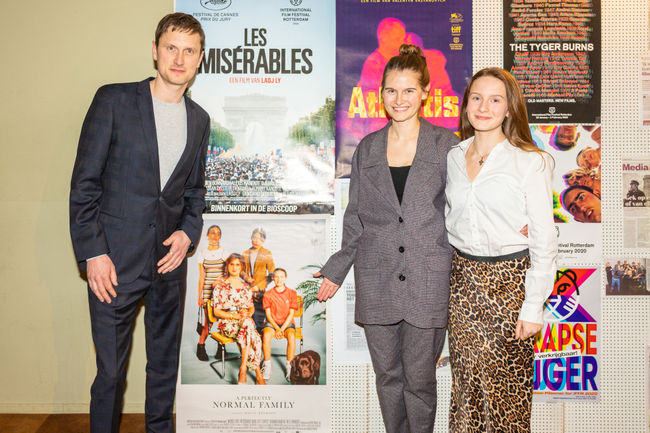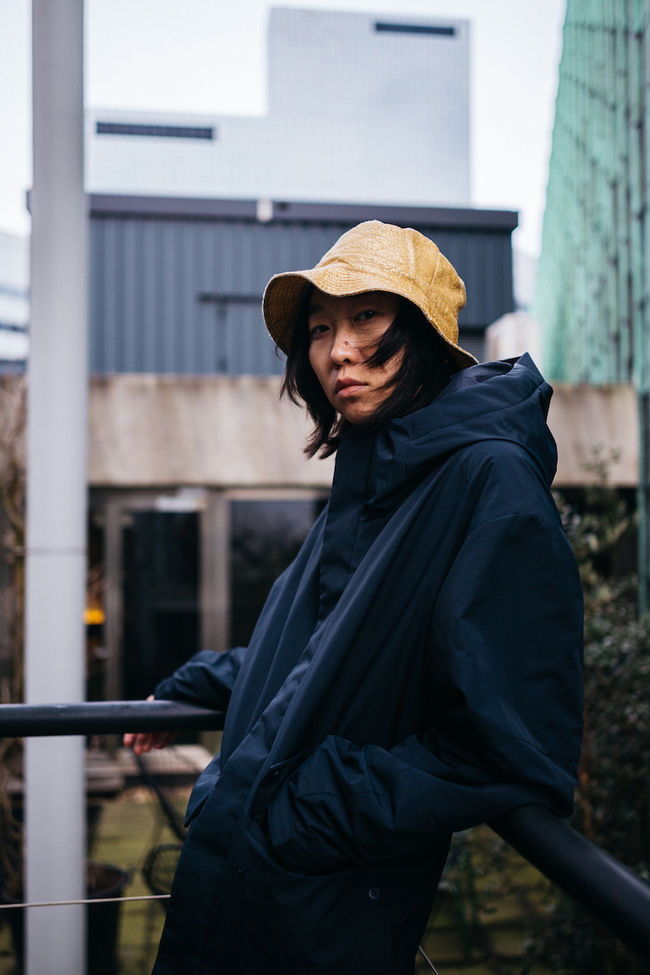Maria Clara Escobar on Desterro
25 January 2020
Maria Clara Escobar on Desterro
On the face of it, the fragmented narration of Desterro offers little to hold on to – but that’s precisely the point that Brazilian filmmaker Maria Clara Escobar is making, in her fiction feature debut about a woman searching for a way to live.
written by Sasja Koetsier
It’s not easy putting your finger on what’s exactly going wrong between Laura and Israël, parents to their five-year-old son Lucas. Their relationship is falling apart, but is it their fault? Pieces of conversations and interactions suggest that the nature of their problem might be part of a bigger picture, of the societal structures around them.
Instead of confronting her situation, Laura retreats – but that response proves to be a dead end. Building her story from disparate pieces, Maria Clara Escobar is presenting an image of a woman, of womanhood and of society all at once. About the latter she explains: “When I started thinking about this film, one of the things I wanted to talk about is this passive role our society is playing, this thing of being terrified and not being able to get into the conflict and fight for things.”
A woman sings about her desterro, her exile, in a song that plays during the credits. What does it exactly refer to?
“The word can’t be translated properly. For that reason, we chose – and fought for it – to keep the Portuguese title, also for international distribution. What it means is being without land, and it refers to a feeling of having nowhere to put your feet on, nowhere to belong.”
The song is one of many pieces telling the story of Desterro. How did you arrive at this fragmented form?
“The point of departure was the last image, and from there we started to construct the film. All I knew then was the atmosphere of the film, this feeling of desterro, and that it was about a couple. I brought together some people, including the main actress, and together we watched films, read poems and discussed them. I wrote an undeveloped little story and together we began feeding this story. With my script collaborator and the photographer, I tried out some scenes, finding out how to construct this atmosphere and how we wanted to tell the story.”
So what made you choose this way of telling the story?
“There’s a pact that we have to pretend that a film is not a film in order for the audience to feel something. I want to go against that. The way we filmed and edited it is meant to remind the audience that they’re watching a film. There’s something that I used to say to the actors while we were shooting: ‘If you’re feeling comfortable, this is not alright!’ We wanted to find the discomfort in ourselves. So we were doing a scene in a certain way, and if it felt right, we would then try it the ‘wrong’ way. In editing we also used this a lot, and it was actually fun.”
And what were your references for this film?
“Many films, and books too. I made a second screenplay that only consisted of images and poems. Before we’d enter a scene, we could see or read something that would approach the feeling that we wanted to create. Sometimes music was the reference for the feeling of a specific shot. In that way, there were different references for every scene. Overall, references for the film were, for example, Come and See by Elem Klimov, which has the same feeling of desterro, Leos Carax’s Mauvais sang and several films by Marguerite Duras.”
A crucial part of the film is a long bus journey during which Laura and a number of other female passengers share their personal experience of life. How did this sequence emerge?
“From the beginning, the film was supposed to be about the possibility of life for Laura – how to be alive as a woman in whatever kind of structure. The bus journey brought the idea of movement, and then I decided to include these testimonies of other women, their stories about their lives and how they are trying to be something in movement – not static, framed, like Laura is during the rest of the film. As a woman, you’re always being defined in strict categories: you’re either this or that, you’re not allowed to be something that we don’t have a name for. In this sequence, even though we already know that Laura will die, it’s more important to find out how she can live.”
At the heart of this story are a woman and two men: Laura’s boyfriend Israël and Julio, whom she meets on the bus. What do these two characters represent?
“Julio is a repetition of the part that Israël is playing in her life. That’s why it doesn’t work. This tendency to repeat the same ways, play the same parts, and the failure it brings, is another issue the film talks about. This is something I identified in the Brazilian middle class: the idea that you should avoid conflict. But by avoiding conflict, you don’t really exist.”





